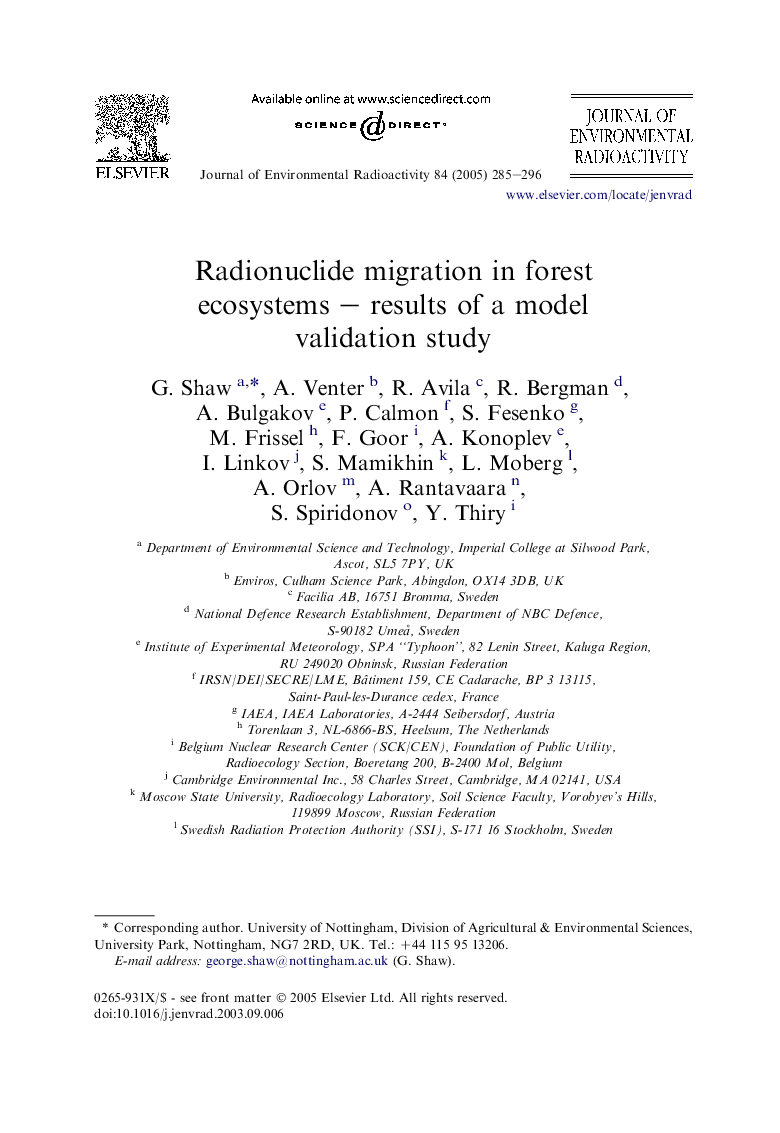| Article ID | Journal | Published Year | Pages | File Type |
|---|---|---|---|---|
| 10686793 | Journal of Environmental Radioactivity | 2005 | 12 Pages |
Abstract
The primary objective of the IAEA's BIOMASS Forest Working Group (FWG) was to bring together experimental radioecologists and modellers to facilitate the exchange of information which could be used to improve our ability to understand and forecast radionuclide transfers within forests. This paper describes a blind model validation exercise which was conducted by the FWG to test nine models which members of the group had developed in response to the need to predict the fate of radiocaesium in forests in Europe after the Chernobyl accident. The outcomes and conclusions of this exercise are summarised. It was concluded that, as a group, the models are capable of providing an envelope of predictions which can be expected to enclose experimental data for radiocaesium contamination in forests over the time scale tested. However, the models are subject to varying degrees of conceptual uncertainty which gives rise to a very high degree of divergence between individual model predictions, particularly when forecasting edible mushroom contamination. Furthermore, the forecasting capability of the models over future decades currently remains untested.
Related Topics
Physical Sciences and Engineering
Energy
Nuclear Energy and Engineering
Authors
G. Shaw, A. Venter, R. Avila, R. Bergman, A. Bulgakov, P. Calmon, S. Fesenko, M. Frissel, F. Goor, A. Konoplev, I. Linkov, S. Mamikhin, L. Moberg, A. Orlov, A. Rantavaara, S. Spiridonov, Y. Thiry,
